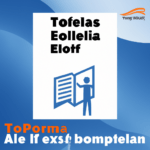Frameworks and methodologies provide structured approaches to tackling complex problems efficiently and collaboratively. These tools offer systematic guidelines for organizing tasks, defining roles, and achieving objectives. By leveraging established frameworks, teams can streamline workflows, enhance communication, and foster innovation. The agile methodology, for instance, emphasizes adaptability, customer collaboration, and iterative development. It enables teams to respond swiftly to changes and deliver high-quality solutions promptly. Frameworks like Design Thinking encourage creative problem-solving by focusing on empathy, ideation, and prototyping. By embracing diverse methodologies, organizations can cultivate a culture of continuous improvement and drive sustainable growth in today’s dynamic business landscape.
Table of Contents
- Agile methodology
- Comparison of different project management frameworks
- Definition of a framework
- Popular software development frameworks
- Waterfall methodology
(Framework vs Methodology)
Frameworks and methodologies are essential tools in various industries. They provide structured approaches to solving problems and achieving goals. By following a framework or methodology, individuals and organizations can streamline processes, improve efficiency, and enhance decision-making.
One commonly used framework is the Agile methodology, which emphasizes flexibility, collaboration, and continuous improvement. Agile is popular in software development but can be applied to other areas as well. Another well-known framework is the Six Sigma methodology, which focuses on process improvement and reducing defects.
Frameworks provide a roadmap for achieving success by breaking down complex tasks into manageable steps. They help to ensure consistency and quality in outcomes. When used effectively, frameworks and methodologies can lead to increased productivity, innovation, and overall success.
It is important to choose the right framework or methodology for the specific needs of a project or organization. This requires careful consideration of factors such as goals, resources, and constraints. By selecting the most appropriate framework, individuals and teams can set themselves up for success and achieve their desired outcomes.
In conclusion, frameworks and methodologies are powerful tools that can drive success and excellence in both personal and professional endeavors. By leveraging these structured approaches, individuals and organizations can navigate challenges, make informed decisions, and achieve their goals efficiently and effectively.
Agile methodology
Agile methodology is a game-changer in the world of project management. Picture this: a dynamic, collaborative approach that values individuals and interactions over processes and tools. Agile thrives on adaptability to change, promoting quick iterations that lead to better outcomes.
Imagine you’re part of an Agile team — it’s like being in a well-oiled machine where every cog fits perfectly. Each member brings unique strengths to the table, fostering creativity and innovation. The camaraderie is palpable; there’s trust, respect, and a shared goal driving everyone forward.
In Agile methodology, flexibility reigns supreme. Instead of rigidly following a predetermined plan, teams embrace uncertainty with open arms. They pivot when needed, adjusting course based on feedback and new insights. It’s invigorating — this sense of freedom to evolve organically as the project unfolds.
Communication lies at the heart of Agile practices. Imagine daily stand-up meetings buzzing with energy as team members share progress updates and roadblocks faced. Collaboration flows effortlessly, ideas bouncing off each other like sparks igniting a firework display of creativity.
As an Agile enthusiast myself, I can’t help but feel inspired by its core values: transparency, accountability, and continuous improvement. It’s not just about completing tasks; it’s about growing together as a cohesive unit striving for excellence.
The beauty of Agile methodology lies in its emphasis on customer satisfaction through early and continuous delivery of valuable software. Picture stakeholders beaming with delight as they see their vision come to life incrementally — each sprint bringing them closer to their dream product.
Visualize standing in front of a Kanban board filled with sticky notes representing tasks flowing seamlessly from “To-Do” to “Done.” There’s something immensely satisfying about moving those pieces across the board — tangible evidence of progress made in real-time.
In conclusion,
Agile isn’t just another buzzword; it’s a transformative mindset reshaping how projects are executed worldwide. So next time you hear someone mention Agile methodology,
imagine yourself immersed in its vibrant ecosystem
— embracing change,
fostering collaboration,
and celebrating incremental victories along the way.
That’s the magic of Agile!
Comparison of different project management frameworks
When it comes to project management, there are a variety of frameworks and methodologies to choose from. Each has its strengths and weaknesses, catering to different types of projects and teams. Let’s take a closer look at some popular ones: Agile, Waterfall, Scrum, Lean, and Kanban.
Agile is like the chameleon of project management. It’s flexible, adaptive – perfect for fast-paced environments where requirements may change frequently. Picture this: a team sprinting through tasks with ease, adjusting course as needed without breaking stride. The freedom within the structure allows for creativity and innovation to flourish.
On the other hand, Waterfall is more traditional – think of it as climbing a staircase one step at a time. It’s sequential in nature; each phase must be completed before moving on to the next. This method provides clarity but can feel rigid when unexpected changes arise.
Scrum brings teamwork front and center stage with its daily stand-up meetings resembling a huddle in sports games. Here emotions run high as collaboration reigns supreme – successes celebrated together while challenges tackled head-on as a unified force!
Lean focuses on efficiency like an athlete striving for peak performance by eliminating waste wherever possible – imagine trimming excess fat off a piece of meat until only lean muscle remains! This approach values optimization above all else which can lead to incredible results if executed properly.
Kanban operates visually – akin to sticky notes plastered on an office wall mapping out every task in progress or pending completion like pieces of a jigsaw puzzle waiting to be assembled into coherence.
Each framework suits particular contexts better than others so choosing the right fit hinges on understanding your project’s needs alongside your team dynamics.Sometimes you need agility,sometimes methodical planning,sometimes sheer focus,and sometimes visual clarity.Whatever path you embark upon,it’s essential that communication flows freely between all stakeholders guiding your journey towards success.Project management isn’t just about ticking boxes;it involves weaving relationships,nurturing ideas,pivoting swiftly,and ultimately creating something greater than the sum of its parts.The key lies not just in picking any framework,but in selecting one that resonates deeply with both your project goals and the people involved.Together,you’ll navigate obstacles,champion victories,and forge ahead into uncharted territories armed with knowledge,collaboration,and unwavering determination.And who knows,maybe along the way,you’ll discover anew hybrid methodology that blends the best of all worlds,breaking new ground in project management evolution.
Definition of a framework
Picture a framework as the sturdy backbone of a project, the invisible structure holding everything together. It’s like the foundation of a house – you can’t see it from the outside, but without it, things would quickly fall apart. When we talk about frameworks in various fields like software development or business management, we’re referring to an organized set of guidelines, rules, and best practices that help streamline processes and achieve specific goals effectively.
In essence, a framework acts as a roadmap for success. It provides teams with a clear path to follow by outlining steps to take and milestones to reach along the way. Think of it as your trusty GPS guiding you through uncharted territory; it keeps you on track and helps prevent getting lost in complexity and confusion.
Frameworks come in different shapes and sizes depending on their intended use. For example, in software development, popular frameworks like React or Angular provide developers with pre-built components and structures to speed up application development. These frameworks bring consistency to coding practices across teams while reducing repetitive tasks so that developers can focus more on innovation rather than reinventing the wheel each time.
Similarly, in project management, methodologies such as Agile or Waterfall offer structured approaches to planning, executing, and monitoring projects from start to finish. They define roles and responsibilities within teams, establish communication channels for feedback loops, and enable adaptability when facing unexpected challenges – all crucial elements for successful project delivery.
The beauty of frameworks lies in their flexibility – they are not rigid laws but adaptable tools that can be customized based on unique project requirements. This versatility allows teams to tailor their approach while still benefiting from established best practices proven effective over time.
Ultimately, a framework serves as both guardrails keeping you safe on your journey towards achieving goals yet also providing enough freedom for creativity and growth along the way — think of it as dancing within boundaries where constraints breed innovation rather than stifling progress.
So next time you embark on a new venture whether big or small consider embracing a suitable framework – your reliable companion navigating uncharted waters toward success!
(7 Important Project Management Methodologies You Need To MASTER)
Popular software development frameworks
When diving into the dynamic world of software development frameworks, you’re in for a thrilling ride. These frameworks are like trusted guides navigating developers through the complex terrain of coding projects. Imagine them as blueprints laying a solid foundation before construction begins.
One powerhouse in this realm is AngularJS, which boasts unparalleled efficiency and flexibility. With its robust structure, developers can craft dynamic single-page applications that mesmerize users with seamless interactions. AngularJS dances gracefully between client-side and server-side operations, making it a beloved choice across industries.
On the flip side, React.js emerges as another darling among developers globally. This framework breathes life into user interfaces by breaking them down into modular components. Each component acts like a puzzle piece fitting snugly to create a stunning visual tapestry on web pages or mobile apps. The React.js community thrives on innovation and collaboration, fostering an ecosystem where creativity knows no bounds.
Meanwhile, Laravel stands tall as the PHP framework champion revolutionizing backend development practices. Its elegant syntax coupled with powerful features simplifies crafting secure and scalable web applications effortlessly.Designer minds find solace in Laravel’s intuitive interface while delving deep into crafting intricate functionalities that elevate user experiences to new heights.
Moving onto Ruby on Rails – consider it the enchanting wizard of rapid application development! Sweeping away mundane tasks with its magical touch,Ruby on Rails enables developers to conjure up feature-rich web apps at lightning speed.With an emphasis on convention over configuration,this framework accelerates project timelines without compromising quality.Behind every successful RoR project lies a team fueled by passion and boundless imagination,brewing excellence one code snippet at a time.Captivating indeed!
Lastly,dive into Vue.js,a rising star radiating charm within developer circles.This progressive JavaScript framework strikes harmony between simplicity and versatility,enabling devs to sculpt interactive interfaces seamlessly.Vue welcomes beginners with open arms,yet dazzles veterans craving advanced customization options.A peek behind Vue’s curtains reveals meticulous attention to detail fueling its meteoric rise amidst stiff competition.An ode to elegance,reliability,and sheer coding joy,Vue.js injects lifeblood into modern frontend development endeavors.Symbolizing unity amid diversity,this gem unites tech enthusiasts worldwide under its vibrant banner,marching forward towards innovation utopia together.As you unravel these popular software development frameworks,don’t just witness their technical prowess;immerse yourself in the human stories pulsating beneath lines of code—that’s where true magic unfolds!
Waterfall methodology
Waterfall methodology is like crafting a meticulously planned masterpiece, step by step, each phase flowing seamlessly into the next. It’s a structured approach to project management where progress cascades downwards through distinct phases – requirement gathering, design, implementation, testing, deployment, and maintenance.
Imagine standing at the top of a grand waterfall; this methodology mirrors that breathtaking descent. Each stage represents a plunge toward completion with no turning back once you’ve taken the leap.
In the realm of software development or any complex project requiring clear milestones and deliverables set in stone from the outset, Waterfall shines brightest. It offers stability amidst uncertainty; like a steady stream cutting its path through rocks – unwavering in its course.
However, there’s an emotional weight that comes with this method too. The rigid structure can feel suffocating for those who thrive in flexibility and spontaneity; it demands strict adherence to predefined plans without much room for improvisation along the way.
The beauty of Waterfall lies in its simplicity – everything has its place and time within this linear journey. But on the flip side, changes late in the game can create ripples felt throughout every preceding stage – akin to trying to redirect a river already set on its course.
Yet despite its limitations when faced with evolving requirements or unforeseen obstacles downstream, adherents find solace in knowing exactly where they stand at every point. There’s comfort in certainty even if it means sacrificing adaptability sometimes along turbulent waters.
Like watching water cascade over rugged cliffs reflecting sunlight like scattered diamonds before crashing below into misty oblivion – so does each completed phase lead to another until finally reaching the basin of project completion.
Overall impression? Waterfall methodology may not suit everyone’s taste but for those craving order amid chaos it stands as an enduring symbol of meticulous planning paving paths towards success eventually albeit one careful drop at a time!













